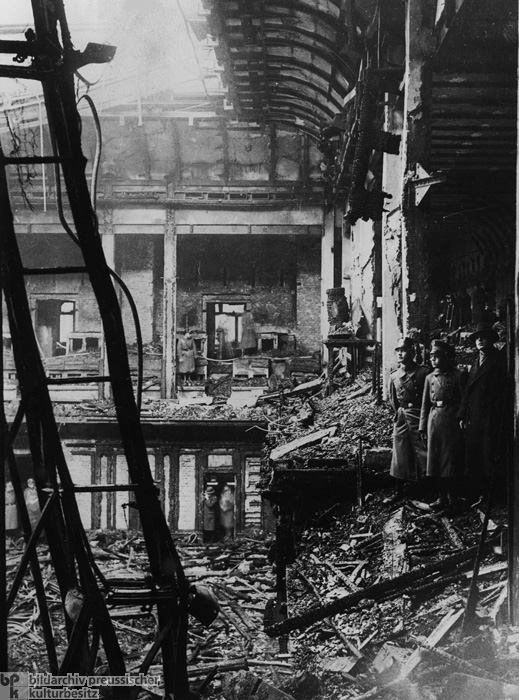













INTRODUCTION | DOCUMENTS | IMAGES | MAPS | EDITOR
|
After seizing power, Hitler's top priority was eliminating all political opposition. He considered the Communists and the Social Democrats his strongest ideological opponents, and Nazi supporters, especially members of the SA (also known as brownshirts), engaged in frequent street fights with these groups during the first weeks of Hitler’s rule. Additionally, Hitler relied heavily on Hermann Göring, who, as acting Prussian Minister of the Interior, controlled the country's police forces and used them to persecute alleged enemies of the state. Still, Hitler took constant care to cloak his brutal and arbitrary methods in the mantle of legitimacy. In this respect, he was extremely lucky that Marinus van der Lubbe, a radical leftist Dutchman, was arrested outside the burning Reichstag on February 27, 1933. The Nazi leadership immediately decided to present the Reichstag fire as clear proof of a Communist plot for a coup d'état and to use this "proof" as grounds for finally eliminating the left-wing political opposition. On the following day, Hitler persuaded Hindenburg to issue the “Decree of the Reich President for the Protection of the People and State" (also called the "Reichstag Fire Decree"), which largely abolished the basic rights guaranteed by the Weimar Constitution and increased the central government's control over regional governments. In the following weeks, thousands of Communists and Social Democrats were arrested and their meetings and publications were banned. Hitler had thus used "legal" means to build the foundation of his dictatorship.
© Bildarchiv Preußischer Kulturbesitz |
 print version
print version return to image list
return to image list previous image
previous image
